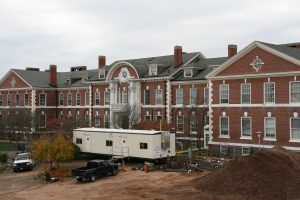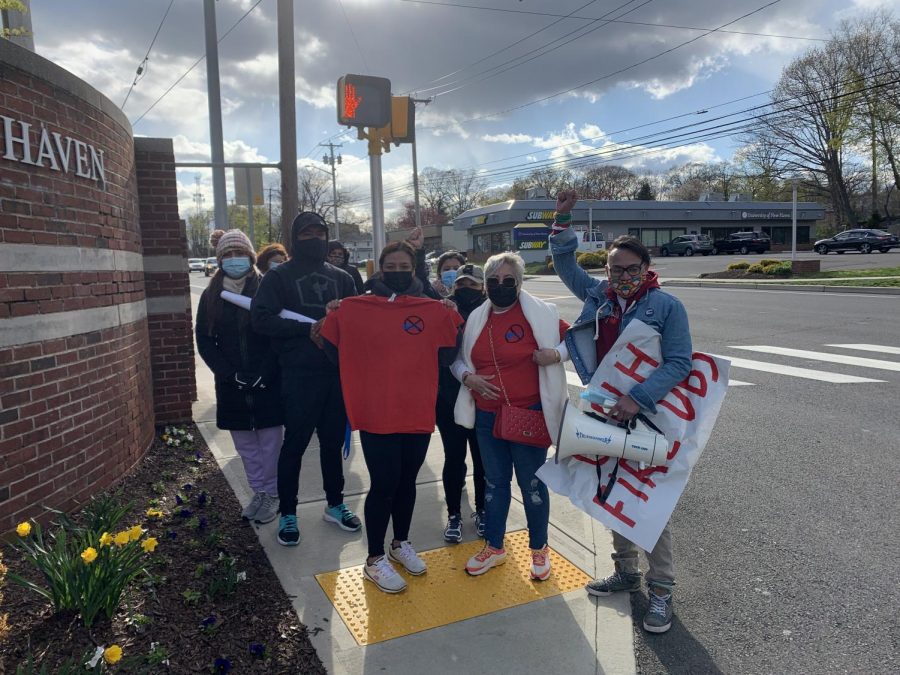The Peterson Library has a keen awareness of UNH’s long, storied, and evolving growth. The presence in our building of the University Archives where most of the historical record is kept helps to foster and strengthen this interest. Our appreciation has led to the creation of a Flickr account where we have begun posting many of the photographs of our past; search flickr in Google and type unhctlibrary in the search box on the Google page to get to our photostream. For those interested in the history of our buildings, the oldest on campus are Maxcy Hall and the Gate House (1909), Harugari Hall (1911), South Campus Hall (1915), and the Arbeiter Maenner Chor building (1922) that we know as the German Club. Each of these buildings has a colorful past worth celebrating, but it was the 1909 date for Maxcy Hall that caught our eye recently and we thought it was worth bringing the origin and fascinating history of this structure to more general attention.

Today’s Maxcy Hall opened late in 1909 as the third and final location of the New Haven County Temporary Home for Dependent and Neglected Children, an institution that had started out in the Tyler City section of Orange in 1884 as part of a statewide solution for the problem of children needing good homes. A photo of the new building in Colonial Revival style appeared on the front page of the New Haven Evening Register on July 9, 1909, with the cost reported there as $150,000. The architects were William H. Allen and Richard Williams, of the Allen & Williams firm that also designed the New Haven County Courthouse and many other still-extant civic, commercial, and residential structures in the Elm City. An article in the New Haven Morning Journal and Courier on November 8, 1909 announced that the children had already arrived from the home’s previous location at Shelton Ave. and Bassett St. in New Haven. There they had lived in an older wooden house that was overcrowded and lacked modern fire protection. The latter was of particular concern to Jacob D. Walter and the other county commissioners who pressed for the new building. It should be of interest to our fire science majors that the new edifice was of brick, fireproof construction, with interior hoses and standpipes, and, since there were no municipal fire hydrants at the time, the home was surrounded by its own exterior water plugs fed by two large holding tanks on the property.
The new home, plus a smaller structure in matching style that we know as the Gate House, was built to accommodate as many as 300 children with classrooms, dormitories, recreational facilities, a chapel, an infirmary, and staff quarters. Located on a 25-acre Allingtown Hill site, the magnificent vista was an added bonus, one that we still enjoy today. An elderly man who visited shortly after the opening declared that these ‘poor’ children were “richer than thousands in the city” and that living here “ought to help in making them fine men and women.” The home, said to have been intended as the “finest in the country,” was lauded for its “palatial appointments” and was perhaps the only one in the eight Connecticut counties specially built for its intended purpose. A half-century later in 1955, when the institutional approach to child care fell out of favor, all the county homes were closed. The vacant property here was purchased in 1960 by President Marvin K. Peterson for New Haven College, which grew to become the University of New Haven in 1970. The structure was known simply as the Main Building until June 4, 1987 when it was named for Dr. Ellis C. Maxcy who headed the college from 1932 to 1937 during the Great Depression. Copies of the invitation to that ceremony are in the UHN Archives at the Peterson Library. The Library, of course, is named for the president who merged Maxcy Hall’s institutional past with its future in academia.
Maxcy Hall continues to be UNH’s ‘main building’ today with classrooms, University offices, and other support facilities. November 2009 calls for celebration as the hundredth anniversary of a building that has housed and educated thousands and improved the lives of the many “fine men and women” who have passed through its doors. The Peterson Library joins with the rest of the University in celebrating Maxcy Hall and its century of public and educational service.






